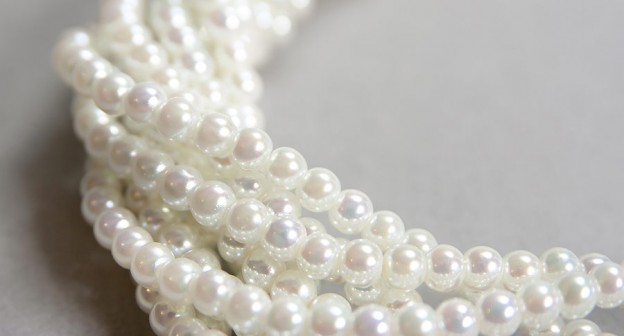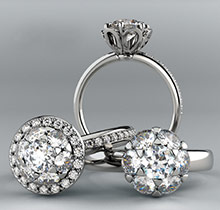Pearls have always been a classic staple in jewelry. Trendsetters like Jackie Kennedy and Audrey Hepburn helped immortalize pearls as a fashion mainstay. And that hasn’t changed over time. In fact, pearl jewelry has seen a surge in popularity in recent years. But with all of the various types of pearls to choose from, selecting one can be daunting.
Pearls are the only gem grown inside a living organism. Because of this, they are not considered precious stones. They are formed when a grain of sand or parasite penetrates the shell of a mollusk and enters the soft mantle tissue. The mantle cells then release a crystalline substance called nacre in response to the irritation caused. The nacre builds up in layers around the irritant to form a pearl. The longer the mollusk has to build up the nacre, the larger and more beautiful the pearl will be.
Known as the “queen of gems,” pearls were the first gem used for adornment because they were relatively easy to obtain. There are two main types of pearls: natural and cultured. Natural pearls are formed randomly in nature with no human intervention. They are extremely rare and are among the most valued in the world. Those with the greatest value take years to develop. Natural pearls are usually pear shaped or irregularly shaped. Round and spherical natural pearls are even rarer. Only about 20 of 8,000 different species of mollusks are able to produce pearls. Very few of those produced are of desired size, color, and shape. Humans harvest only a fraction of naturally produced pearls. Due to pollution and extinction, natural pearls have nearly ceased to exist.
Cultured pearls were created as the supply of natural pearls diminished. But by the 1800s, the supply of natural pearls was nearly gone, due to the high demand. Kokichi Mikimoto and his wife, Ume, then found a way to coax oysters to produce round pearls on demand by inserting a foreign substance into the tissue of the oyster and then returning it to the sea to complete the cultivation process. This allowed pearls to be produced in sufficient quantities to make them accessible to virtually anyone.
There are several types of cultured pearls:
- Freshwater pearls are grown in rivers all around the world, including the U.S. They are available in a variety of tones, including pink, orange, mauve, and golden colors in a variety of sizes, although they are usually smaller than other types of cultured pearls. A single freshwater pearl mussel can produce up to 50 pearls at a time.
- Akoya pearls are cultivated primarily in Japan, China, Vietnam, South Korea, and Australia. To create these pearls, a bead is surgically placed into an Akoya oyster to cause the irritant that will form the nacre. The oyster is then placed back into the sea in an enclosed basket where it will remain for one to three years. With its round shape, neutral colors, and mirror-like finish, the Akoya pearl is considered to be the classic pearl. They are typically white or cream colored with overtones of rose, silver, or cream. Akoya pearls tend to be small, ranging in size from 2 to 11 millimeters, with the average size being 7 millimeters. Akoya pearls are the most consistently round pearls, making them ideal for jewelry using multiple pearls, such as strands of pearls.
- South Sea pearls come from the South Seas between the northern coast of Australia and the southern coast of China. South Sea pearls are among the largest cultured pearls, with sizes ranging from 9 to 20 millimeters, with an average size of 13 millimeters. South Sea pearls cultivate for a minimum of two years to produce the larger size. The nacre is also thicker than other types of pearls. South Sea pearls have a unique, satiny luster and come in a variety of subtle colors, including white, silver, and gold.
- Tahitian pearls, often referred to as black pearls, are a bit of a misnomer. They do not come from Tahiti and actually come in a wide range of colors. In fact, Tahitian pearls are the only pearls to have a full spectrum of colors, and often have a naturally dark body color. Their vast color range makes it difficult to match enough pearls to create jewelry with multiple pearls, like a complete strand. Tahitian pearls are created by grafting a small piece of mantle from one oyster to another. The quality of the resulting pearl will be dictated by the graft tissue used. Tahitian pearls have a thick nacre and are among the largest pearls with a size range of 8 to 18 millimeters. Tahitian pearls are the second most valuable commercially farmed pearls.
There is no industry standard for grading pearls. Every company has its own grading system that is subjective and unique. However, as with other gems, color, luster, shape, surface markings, and size all factor into the value of a pearl.
Regardless of which type of pearl you choose, the natural beauty of these gems will make them an instant classic that you will treasure for years.


